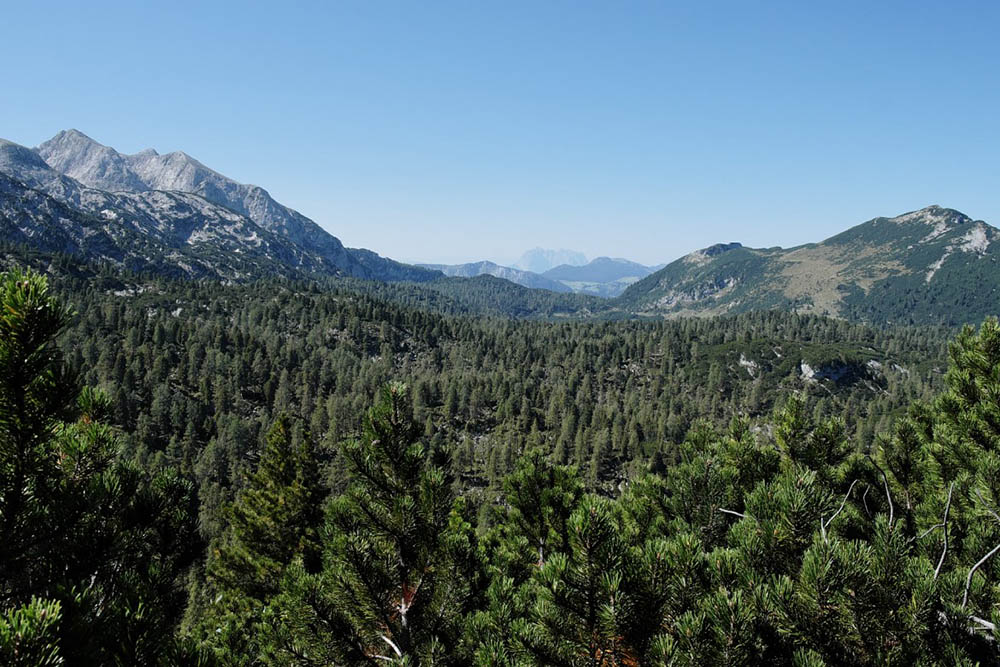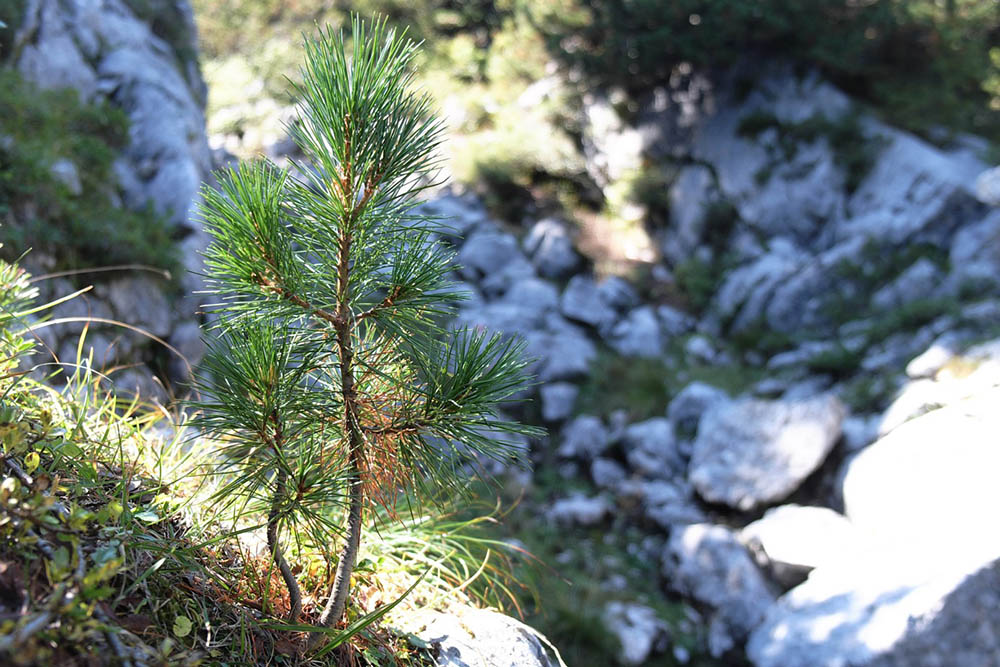Forest dynamics intensive monitoring
Forest development is monitored on four intensive monitoring plots across all forest vegetation zones in the National Park.

Subalpine forest on the Reiteralpe Plateau
Historical land use, climate change and disturbances influence the dynamics of forests in Berchtesgaden National Park. How these factors affect the structure, composition and demography of forests is observed on plots of one to five hectares. On these plots, all trees >1cm stem diameter are recorded and their spatial position is measured.

Swiss stone pine (Pinus cembra) seedlings
Forests are particularly exposed to global change, not least because of their longevity. Forest monitoring in the Berchtesgaden National Park documents and quantifies the dynamics of mountain forests. The forest boundary is a particularly sensitive ecosystem where, for example, climatic changes can have very strong effects. One focus of the forest monitoring is therefore on larch-pine forests, since the Swiss stone pine does not occur in any other large protected area in Germany and the national park on the Reiteralpe is home to the largest contiguous Swiss stone pine occurrence in Germany. On a permanent trial area of 5 ha established in 2021, every tree >1cm was recorded and precisely measured. The data obtained provide information on the structure and composition of subalpine larch-pine forests. They allow insights into the demography of the forest and document how tree populations can establish themselves even under very harsh environmental conditions. In addition, further monitoring plots will be established in other important forest types of the national park to compare climate influences across forest types.
Contact:
Prof. Dr. Rupert Seidl
Ecosystem dynamics, forest management, disturbance ecology, ecosystem modeling, landscape ecology, climate impact research, resilience, silviculture.